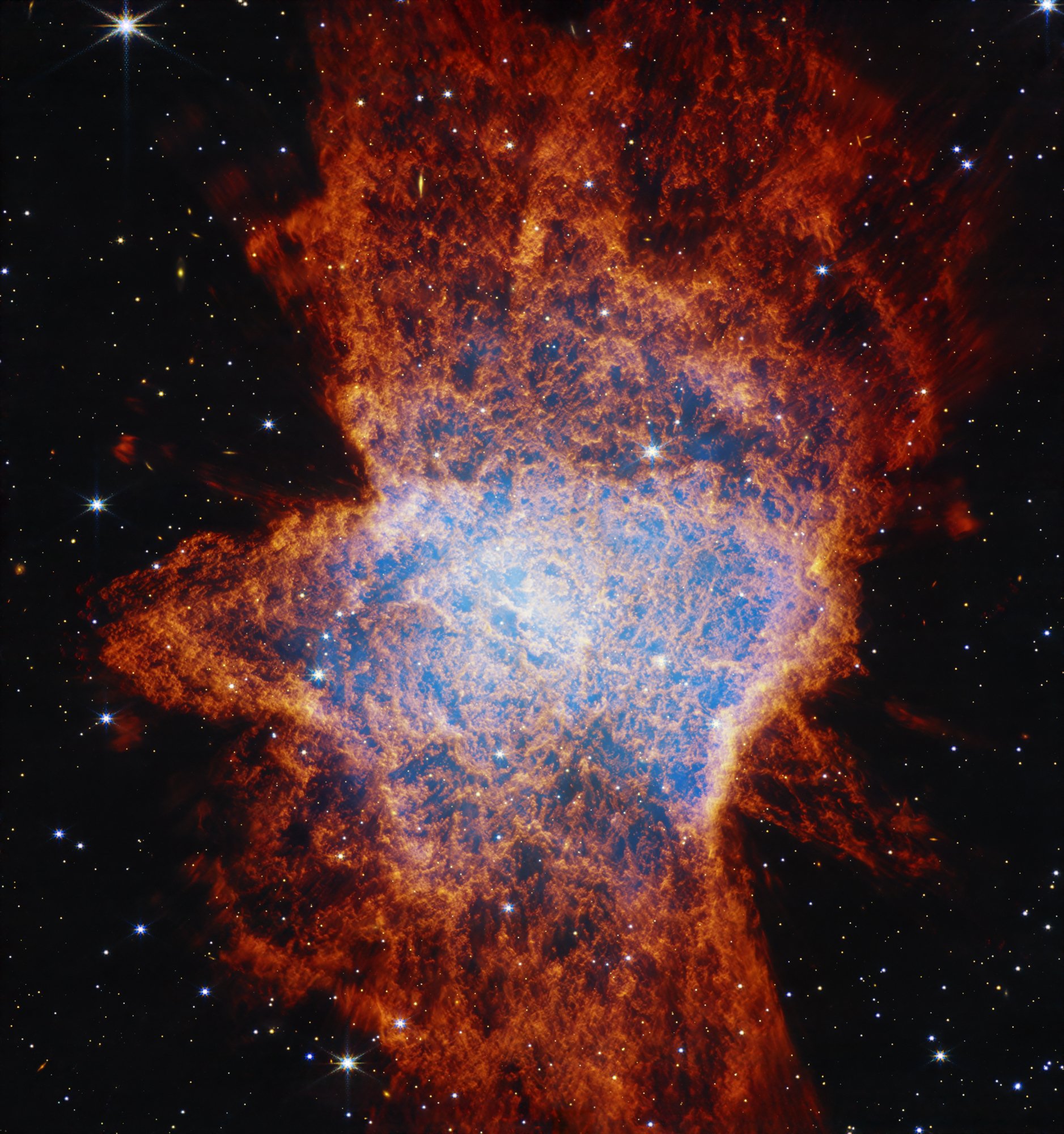A recent study utilizing the James Webb Space Telescope (JWST) has unveiled intricate details of the NGC 6072 nebula, located approximately 3,060 light-years away in the southern constellation of Scorpius. This nebula, which deviates from the typical circular or elliptical shapes observed in many planetary nebulae, exhibits complex structures that may enhance our understanding of stellar evolution.
Unpacking the Structure of NGC 6072
The high-resolution images captured by Webb’s Near-Infrared Camera (NIRCam) and Mid-Infrared Instrument (MIRI) reveal a chaotic yet revealing configuration reminiscent of a bug splattered on a windshield. These observations suggest that intricate mechanisms are at play within the nebula. The NIRCam data indicates a hot central core glowing in bright blue, surrounded by elliptical outflows that create a multi-polar arrangement.
This unusual structure features two prominent lobes of gas and dust crossing the center at near-vertical angles, with a third lobe extending perpendicularly to form an equatorial plane. The central region contains dark pockets of material encircled by orange gas that transitions to red as it moves away from the core, illustrating how temperatures drop the further one gets from the hot center.
Such a three-lobe formation could imply the presence of at least two stars at the nebula’s heart. One of these is likely a younger companion star accompanying an aging star that has already expelled much of its material.
Insights from the Mid-Infrared Instrument
Meanwhile, MIRI’s longer-wavelength infrared data highlights a web-like structure formed by the outflows of dust. This imagery not only identifies a potential central star—depicted as a pinkish-white dot—but also unveils concentric rings extending from the center towards the edges of the lobes. These rings may indicate a secondary star in orbit around the older star, shaping the nebula’s structure as it moves.
Alternatively, the rings could result from periodic pulsations in the outflows, where gas and dust are expelled at intervals of approximately 1,000 years. The areas depicted in NIRCam (red) and MIRI (blue) trace the cooler gas, likely consisting of molecular hydrogen, while the central regions highlight the presence of hot ionized gas.
As the aging star continues to cool, the nebula will gradually dissipate into the interstellar medium (ISM), contributing heavier elements necessary for the formation of new stars and planetary systems. This research aligns with the JWST’s overarching goal of providing critical insights into the lifecycle of stars and their environmental impacts.
The examination of planetary nebulae is particularly significant as it may offer clues about the future of our own Sun, which is expected to reach the end of its main-sequence phase billions of years from now. The findings from NGC 6072 not only deepen our understanding of stellar life cycles but also enhance our perspective on cosmic evolution.
For further details on this significant research, please refer to resources from NASA, ESA, CSA, and the Space Telescope Science Institute (STScI).
